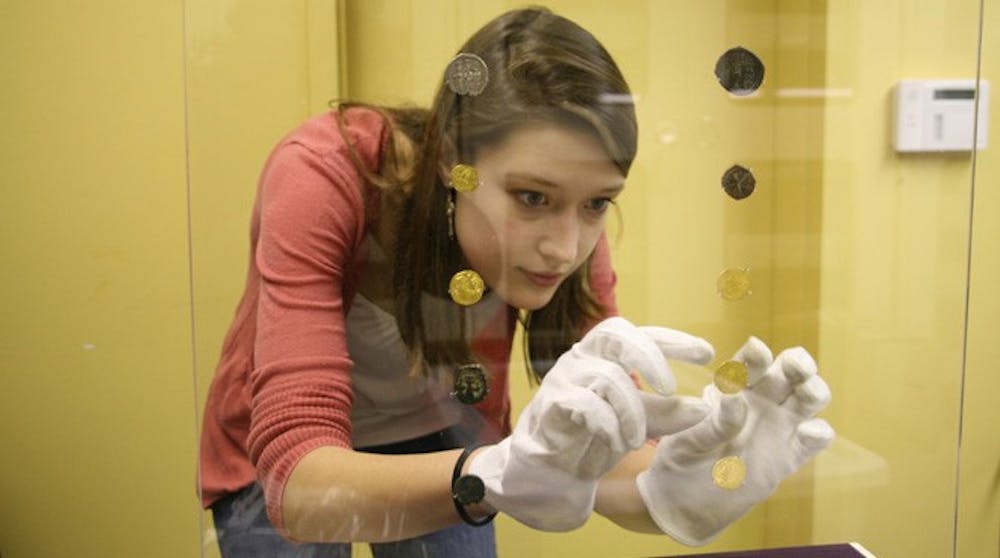Senior Kelly Hughes has always been interested in how religion and historical events impact art, and vice versa. When she discovered that the University of Richmond museums had more than 5,000 Byzantine coins in their collection, she began to do research.
The coin collection became the topic of an exhibit for the University Museums that opened Jan. 30. Hughes, an art history and classical civilization double major and the 2008-2009 Collections Assistant for the University Museums, will be the curator.
"Victories, Orb & Angels: Byzantine Coins from the Collection" presents more than 25 coins that show how Roman pagan motifs were adapted onto bronze and gold Byzantine Christian coins. The exhibit will be in the Lora Robins Gallery of Design from Nature until Nov. 15, 2009.
Hughes, who had never been a curator before, had free reign with the exhibit and got help from the museum staff with the writing and installation. Curating the exhibit became a semester-long project. Hughes was able to go through all the coins in the university's collection during this time.
Doing research on the coins was Hughes' favorite part.
"I think the most interesting part of the coins is how they relate to each other," Hughes said, "and how the earlier issues minted impact later rulers with the images they choose to depict, and so on."
The coins mark important shifts in beliefs throughout history. For example, while researching the coins, Hughes said she learned that when Emperor Justinian II first introduced a coin with a figural representation of Christ on the front, a space usually reserved for the emperor, people began to believe that Jesus was more important than whoever the emperor was. The emperor was then moved to the back of the coin.
Other coins in the collection included one minted during the reign of Eastern Roman emperor Theodosius II, a precursor to Byzantine coinage. This coin has a design that became common on the Byzantine coins. However, the Byzantine coins have a more overt Christian content.
Over time, the style of the coins parted from its pagan roots. For example, a coin minted by John II Comnenus shows Christ enthroned on the front. On the back is the image of the emperor being crowned by the Virgin Mary, implying that he receives authority directly from Christ and the Virgin.
Hughes gave a lecture that explained the meaning behind different coins at the opening of the exhibit. There will be a related lecture on Tuesday, Feb. 10, at 6 p.m. in the Brown Alley room of Weinstein Hall titled "Collecting Medieval Art in America: William Randolph Hearst and The Metropolitan Museum of Art" by Christine E. Brennan, collections manager, The Department of Medieval Art and The Cloisters, The Metropolitan Museum of Art in New York.
Contact reporter Alexandra Varipapa at alexandra.varipapa@richmond.edu
Enjoy what you're reading?
Signup for our newsletter
Support independent student media
You can make a tax-deductible donation by clicking the button below, which takes you to our secure PayPal account. The page is set up to receive contributions in whatever amount you designate. We look forward to using the money we raise to further our mission of providing honest and accurate information to students, faculty, staff, alumni and others in the general public.
Donate Now



